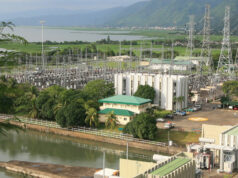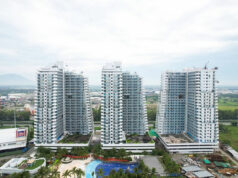By Arra B. Francia
PROPERTY developers would have to be more strategic in scouting for landbanking opportunities as more companies venture into township developments outside Metro Manila, according to Colliers International.

In a report released last week, the property consultancy firm noted how the government’s massive infrastructure program prompted developers to build townships outside Metro Manila to take advantage of their potential to become business hubs in the future.
“Colliers believes that the Duterte administration’s decentralization thrust anchored on the implementation of major public infrastructure projects should entice developers to aggressively pursue integrated communities outside of Metro Manila,” it said in a statement.
For instance, Ayala Land, Inc.’s strategic landbanking has allowed it to launch Ayala Vertis North in Quezon City, the 250-hectare Evo City project in Cavite, and the 25-hectare Azuela Cove in Davao City.
Colliers cited Fairview, San Jose del Monte, Bulacan, Novaliches, and the Commonwealth as areas for potential townships near Quezon City. The provinces of La Union, Pangasinan, Tarlac, Batangas, Naga, Iloilo, Bacolod, Cebu, Davao, and Cagayan de Oro are also seen as strategic locations.
Companies can, however, still look for opportunities inside the metro by either purchasing reclaimed land or buying back properties from previous owners.
Ongoing reclamation projects in the Manila Bay Area include the 148-hectare Manila Solar City — from the Cultural Center of the Philippines to the US embassy, and the 635-hectare Las Piñas- Parañaque Coastal Bay Reclamation Project — located near the Mall of Asia Complex and across the Libertad channel.
Colliers said developers can also consider buying back idle properties from private owners or the government, following the example of Megaworld Corp.’s development of Eastwood City which used to be an idle textile mill, and Rockwell Land Corp.’s transformation of a mothballed power facility into what is now known as Rockwell Center.
“Given the lack of developable land in Metro Manila, we think that some developers should revisit the option of buying back properties that were previously donated to government agencies,” the property consultant said.
Aside from focusing on location, Colliers said developers must also be able to distinguish their projects from others by incorporating features other than the usual office, residential, retail, and hotel components. This can be done by putting up institutions for education and health care.
“Other developers have been more aggressive in “differentiating” their communities by integrating entertainment and recreational facilities for outdoor sports such as football and wakeboarding,” Colliers said.
For instance, Circuit Makati has a skate park, while the Nuvali estate in Cavite has a wakeboarding facility, and Alviera in Pampanga features Sandbox, the country’s first roller coaster zipline.
“The developers’ differentiation strategies are anchored on placemaking or the ‘multifaceted approach to the planning, design and management of public spaces.’ Under this method, developers assess each community’s distinct assets and potential, and eventually build facilities that will maximize those features,” it added.



